Refract Seattle 2022: Three Solid Days of Liquid Magic
- artandcakela
- Mar 28, 2023
- 9 min read
Updated: Dec 11, 2024
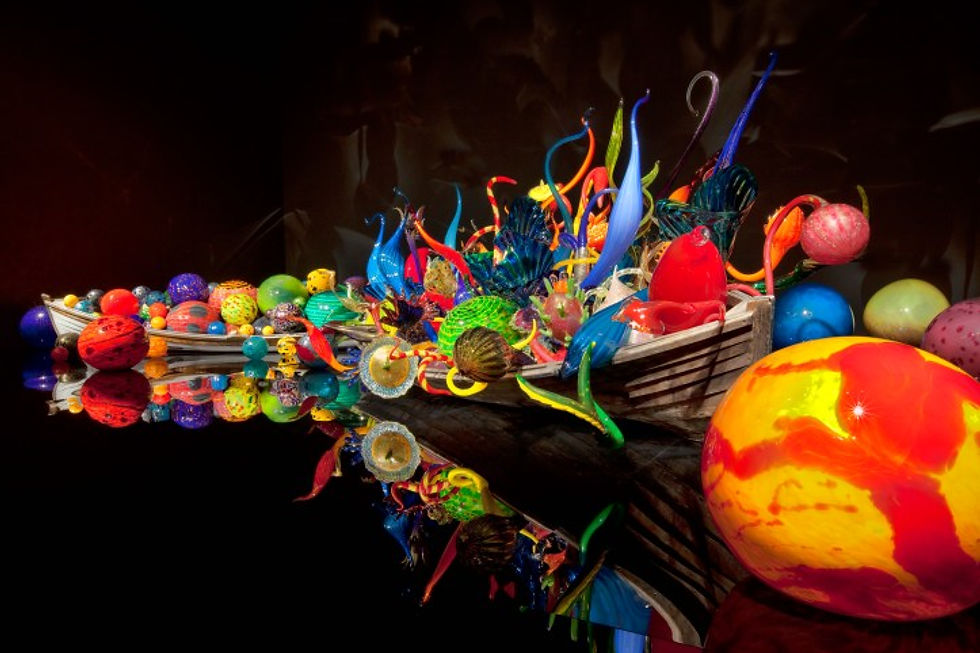
Chihuly Garden and Glass, Float and Ikebana Boats, Copyright Dale Chihuly Studio
Refract Seattle 2022: Three Solid Days of Liquid Magic
Seattle, WA October 13-16, 2022
By Shana Nys Dambrot
Refract Seattle is an annual citywide art festival dedicated to the storied regional ecosystem of fine art blown glass, an evolving art form beloved around the globe for millennia. The enchanting alchemy of luminous color, as the glass in its myriad forms bends and reflects light through inventive prisms and lenses. By contrast to its radiant delicacy and placid depths, the process of taming molten glass is both mentally and physically demanding—and as any fan of Netflix’s glassblowing competition show Blown Away knows, easy to obsess over and quite dramatic to watch.
Glass artworks—regardless of specific imagery, abstraction, scale, angularity, curvature, arrangement, and technique—embody a dynamic interplay of light and shadow, frequently designed to change and evolve as the sun moves across the sky or across architectural spaces, casting a constantly shifting array of hues and patterns onto the surroundings. Seattle is known as a hub of fine glass, and its annual Refract festival is a celebration of not only fresh accomplishments and rich histories of glass art itself, but also of the tight-knit local and international glassblowing community that supports it.
Featuring demonstrations, workshops, lectures, open studio tours, gallery and museum exhibitions, and cocktail parties in abundance, Refract is as focused on marquee items like the wonderland of the Chihuly Garden & Glass environment at the foot of the Space Needle, as it is on guiding folks to the studios and workshops of the great many talented independent glass artists working in Seattle and the surrounding region. Seattle has a rich history of glass art and glassblowing, with roots that can be traced back to the early 20th century.
In the 1920s, the city became home to a number of glass studios, many of which were founded by European immigrants who brought a wealth of knowledge in the medium and other crafts and trades. Since then, Seattle’s glass community has continued to grow and thrive. In the 1960s and 70s, Seattle became a center of the American studio glass movement, thanks in large part to the high profile presence of Dale Chihuly, who founded the renowned Pilchuck Glass School in 1971 (and whose annual benefit is the anchor for the timing of Refract).
Now, no consideration of glass art in Seattle—in the entire world, really—can miss Dale Chihuly. An icon revered for his often inconceivable large-scale, intricate, and prismatic glass installations, as well as for specific advances in coloring, textures, and daring forms, Chihuly’s work has been exhibited in museums and galleries around the world, and his studio continues to innovate. But as much of a touchstone as the Chihuly legend is, the city is home to a diverse range of glass artists, from traditional glassblowers to contemporary artists working with cutting-edge technology, expanding past the elegant and functional into the abstract, conceptual, narrative realm—and increasingly celebrating the voices of women and BIPOC artists who bring exciting new perspectives to the tradition as they explore the history of glass art in their own cultural heritage as both material craft and creative expression.
Blowing hot glass is a physically and mentally demanding (and pretty risky) process that requires a high level of skill and concentration. It involves working with molten glass that has been heated to extremely high temperatures (around 2000°F) in a studio furnace. The hot glass is then rolled on the end of a long metal pipe and shaped with breath, gravity, and tools. The experience can be intense and exhilarating, and it requires the glassblower to work quickly and efficiently to avoid burns and other disasters. At the same time, the process of blowing hot glass can also be deeply satisfying and meditative. Working with the fluid and malleable glass can be a profound experience, elemental and intuitive.
Day One began with a tour of The Boathouse—Dale Chihuly’s private studio. A representation of Chihuly’s artistic and design aesthetic, the historic waterfront industrial site showcases work from several of his iconic series, as well as his personal collections of art and unique objects in the surprisingly expansive and warmly decorated interior nestled behind the working studio. The Boathouse is also home to the Hotshop, where Chihuly and his team create a huge volume of works for exhibitions and installations around the world.
After locating a relatively unremarkable and largely unmarked industrial site along a slightly sketchy waterfront strip, you enter through the Hotshop—part lobby with a office wall made of raw glass sticks sorted by color cubby and an epic storage rack of rainbow shells and curlique horns, and part fully functional site of multiple blast furnaces, cast iron benches, steampunk-like tools, cooling ovens, and a crew of overalls-clad wizards spinning molten limbs and flourishes.
Through a set of handwrought doors fit for a cathedral lies an unexpectedly vast and inviting warren of display galleries and formerly living-in spaces, including a populated fishtank of glass coral, a hallway with a particularly gorgeous example of Chihuly’s trademark backlit ceiling frieze, a windowed longroom with a view of the river and a series of color-graded octo-botanical chandeliers, and a wood-paneled library displaying, among other treasures, a selection of Chihuly’s early breakthroughs in glassblowing technology, and his museological collections of Edward Curtis photographs, Indigenous woven blankets and baskets, rare books, and more. A collector of collections is Chihuly—other treasures include vintage swimsuits, theatrical carnival masks and headdresses, and possibly the world’s oldest Indian Motorcycle. All of this is contextualized within installations of his personal favorites in glass, so that a story emerges of the omnivorous appetite for inspiration that has been feeding his creativity all these decades.
Both inspired and intimidated by the up close and personal insight into the mind and elemental drama of this artistry, our group’s next stop was a glassblowing lesson at a popular pillar of the city’s glass art scene, Seattle Glassblowing Studio. Hands-on participation and one-on-one instruction was…honestly, it was terrifying. Molten glass may look like effervescent taffy but it’s hotter than fire and heavy as iron and must be kept in constant, rotating motion to achieve the stable shapes the artists are after. It requires a huge amount of physical strength and coordination, laser-like focus and nerves of steel, as well as creative vision to work in this medium; it seems like living theater and living history at the same time.
After recovering from the intensity of the experience in the studio’s gallery and shop, we were received at the nearby studio gallery of Lino Tagliapietra, a towering figure in the fine art glass field of the last 70 years. World-renowned for his deft, elegant manipulation of glass and innovative, classical creations, Tagliapietra splits his time between the epicenter of art glass in Murano, Italy and Seattle, where he exhibits both his own and many colleagues’ creations in a rotating intergenerational curation of formal panache. Tagliapietra’s works in particular are both subtle and full of drama, with an elegance that highlights the stubborn delicacy and luxury of the medium in seductive curves and delightful cast reflections of deep color and surprise patterns. The work glows and glimmers in a timeless, unapologetic reach for poetic beauty.
Later that evening, Gather (Refract’s official opening night party) was held at Chihuly Garden & Glass—an undeniable tourist favorite that is also one of the most impressive, enchanting indoor/outdoor, architecture/landscape, museum-quality installations of glass sculpture in the world. In addition to enshrining many of Chihuly’s most iconic works for floor, wall, ceiling, pedestal, lawn, atrium, and flowerbed, the venue also opens with a cozy version of the library room from the Boathouse, full of colorful blankets and inventive glass pieces that serve as the studio’s origin story. The newest installation, Winter Brilliance, is an all-white choreographed light display like a blizzard made of diamonds, silver snowfall on the moon. From there the exhibition rooms unfold in a procession that, while not technically immersive in the way spectacle producers mean these days, gets close.
Theatrically darkened, explosively chromatic wild gardens of Edenic surrealism, “floating” boats and bobs inspired by Venice, cascading frozen fountains, two-skinned vessels that seem like illusions… the impression is opulent and palatial even before the soaring atrium and its autumnal hanging garden. And all that is before you go outside and encounter the botanical creations in flowering landscape settings. From a frozen fireworks mum of solar hues to a pink rock-candy monolith, to crops of blood-red reeds, proliferations of invented flowers and shimmering succulents, the plants of nature grow beside the garden’s glass—all in the retro-future shadow of the Space Needle. It’s a handmade sci-fi fantasyland. No wonder people love it.
Day Two was genuinely unexpected. We began by meeting with a team from the EnChroma company—makers of glasses that correct color blindness. They often work with museums and art institutions to raise awareness, disseminate the science, and advance their accessibility technology—and their partnership with Refract was inspired by the explosive role of color in the world of glass art. Often undiagnosed and under-remedied, color blindness affects one in 12 men and one in 200 women—over 350 million people worldwide. Typical vision comprises over one million shades, while people who are color blind only see about 10% of that. For this community, colors like green and yellow, gray and pink, purple and blue, and red and brown look similar to each other, muted and dull, which can, among other things, drastically limit their enjoyment of nature, design, and art—especially color-centric works.
We met a small group of a few color blind people (including some who were artists themselves) to first hear their stories of what they feel they have been missing and how it affects their life and work—and watched them freak out (in a good way) when they put the EnChroma glasses on inside the art gallery we were visiting—a well-chosen riot of color, detail, and visual narrative. Method Gallery was hosting Seattle artist Benjamin Wright’s #NaughtyByNature—a cavalcade of assemblage-based juxtapositionally arrayed found-objects with art historical wit and whimsy. With a background in evolutionary biology, conceptual art, and traditional craft, and also serving as Artistic Director at the legendary Pilchuck Glass School, Wright filled the gallery with a cheerfully assaultive order-in-the-chaos tumult of nostalgia and the occasional dirty joke. The careful wilderness of salvaged vintage objects of breathtaking variety, reminiscent of Jason Rhoades but with more joy than irony and a more direct focus on how we destroy, depict, and fetishize landscape and nature. If you were someone who had never seen the full color spectrum before, and this was where you put on the magic glasses, I can only imagine the sensation of pleasant vertigo that might ensue. The group were off on a voyage of discovery inside this installation.
The occasion was part of the EnChroma Color Accessibility Program, which helps venues such as schools, state parks, libraries, museums, tourism bureaus, resorts, and other organizations loan EnChroma glasses to students and guests. Among the 200 venues that are part of it, more than 80 are art museums—two Smithsonian museums, the Georgia O’Keeffe Museum, Chihuly Garden & Glass, Chau Chak Wing Museum, Centraal Museum Utrecht, Museums of Contemporary Art Chicago and Denver, the Dallas Museum of Art, Crystal Bridges Museum of American Art, The Nelson-Atkins Museum, etc. It makes so much sense for art appreciation and accessibility outreach, and prompts even the non-color blind to pause and more deeply consider our own individual relationship to color.
Later, we returned to Seattle Glassblowing Studio to view their special exhibition, Native Voices, a remarkable group show of Native & Indigenous glass art, representing a growing voice in the gallery community, and to watch a live demonstration from acclaimed glass artist Dan Friday, who is Lummi/Coast Salish. Friday’s themes and images are often drawn from his Indigenous heritage, as he movingly explored during his fan-favorite time on the Netflix TV series Blown Away. His sister Raya Friday is also a huge talent active in the community, and was featured in the gallery show. Her piece was a fascinating basket/vessel that combined reed weaving with glass in an eloquent but understated fusion of aesthetics and ancestral idioms.
Nighttime saw legendary and very rock-n-roll artisan outfit Glass Eye Studio threw an evening party with large-scale live glassblowing by the team and special guest artist Rob Stern, also fresh from a stint on Blown Away. (Seattle was well-represented on the program, as you might imagine.) To the beat of live music, the wide staircase and balcony was crowded with people, watching humans battle with fire for control of the laws of physics.
Day Three we went back to Chihuly Garden & Glass for breakfast; it was early but this time we had it all to ourselves, which was a nearly spiritual experience compared to the bustle of the night party, and with daylight’s vagaries playing new games with the outdoor work than the spotlights of the evening. There were open studios in several neighborhoods of the city, but I went off to find the permanent installation of stained glass bird mobiles hanging in the atrium of the Ballard neighborhood’s National Nordic Museum. Trondur Patursson’s Migration, 2012 is a simple yet perennial gesture of light and flight, activating the architecture’s space and location with a poignant metaphor for immigration in the coastal fishing town’s flocks of seabirds, frequently visible outside the museum windows. Not as flashy as some glass on the tour, but it was like looking at solid poetry, this small flock of translucent birds that evoke motion in their embodied refracted light and help tell the story the museum exists to tell.
The next Refract Seattle will be held October 12-15, 2023.For more information visit website and social media: visitseattle.org | refractseattle.org | facebook.com/visitseattle | facebook.com/refractseattle| Twitter: @VisitSeattle| IG: @VisitSeattle | @refractseattle

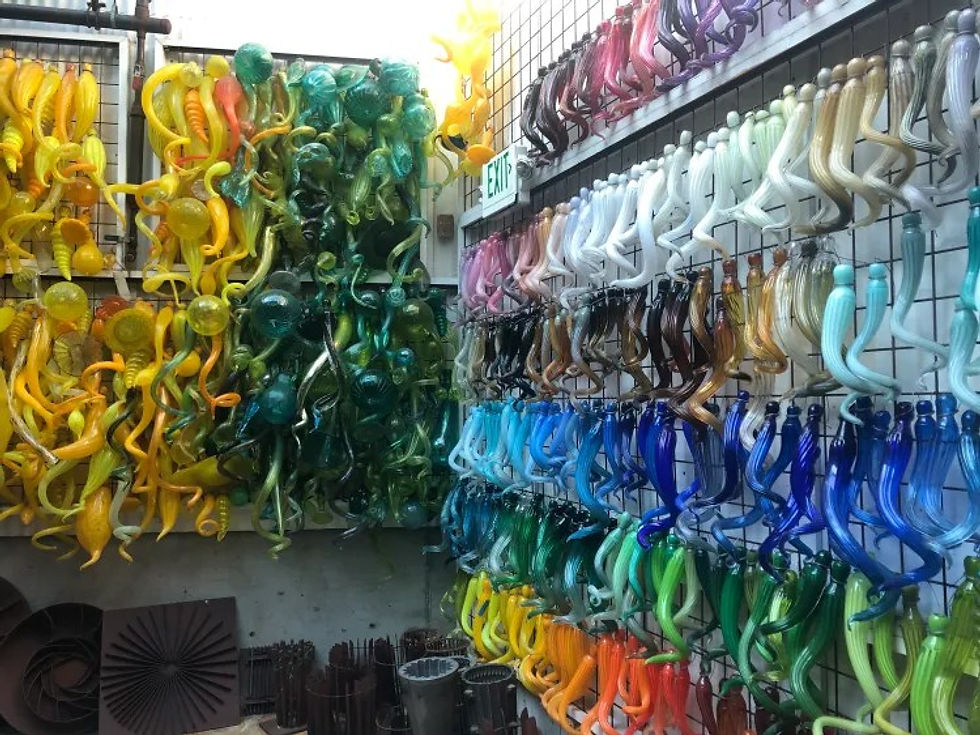
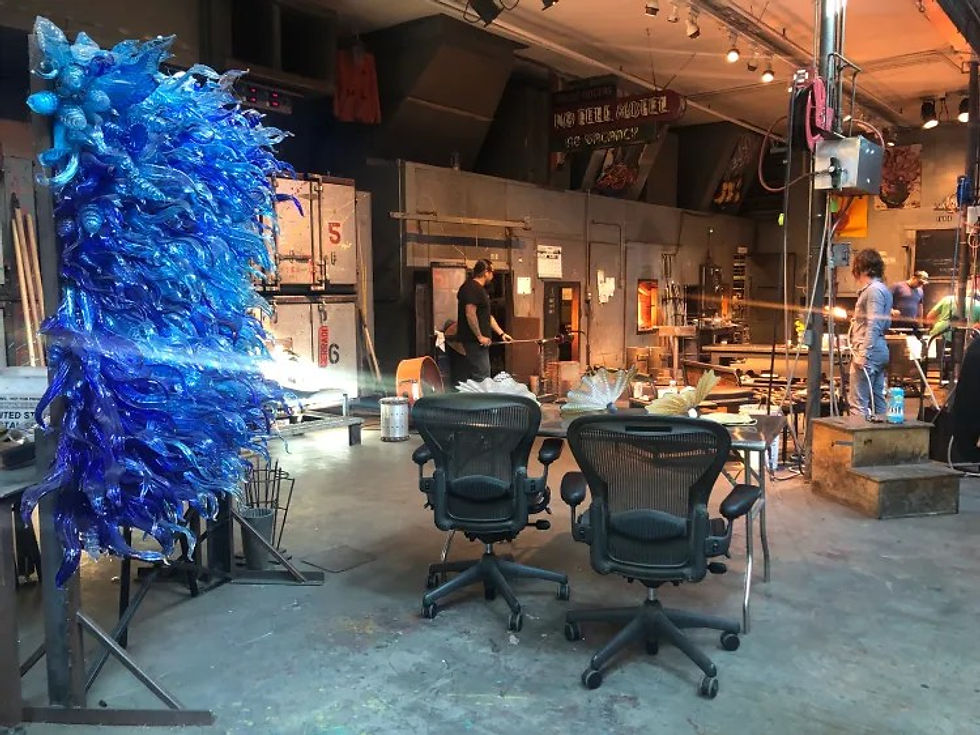







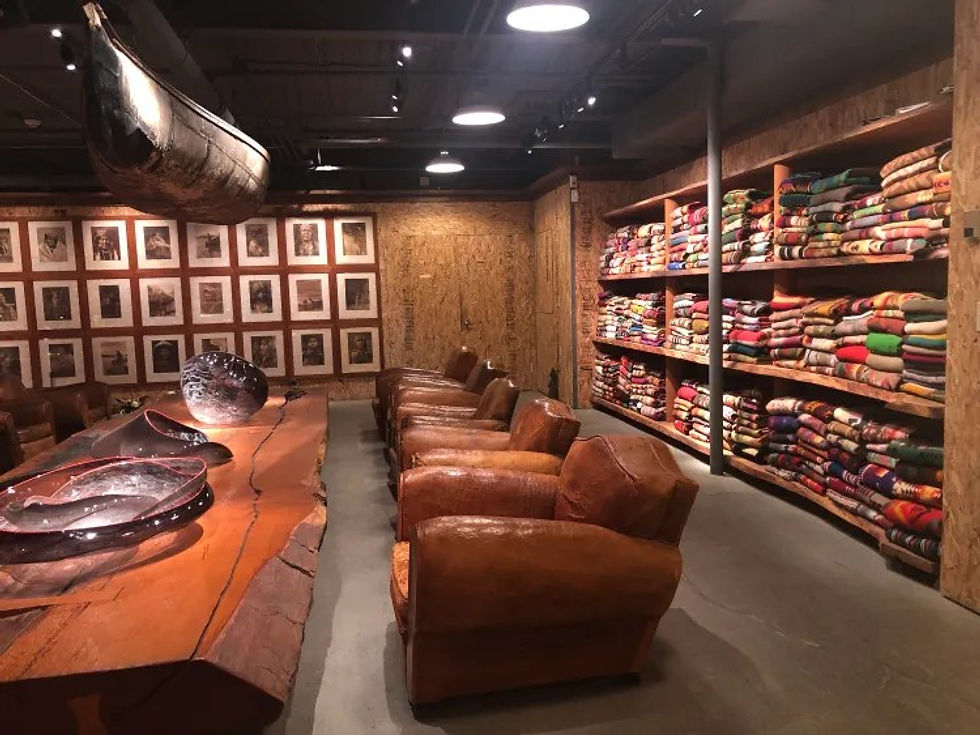

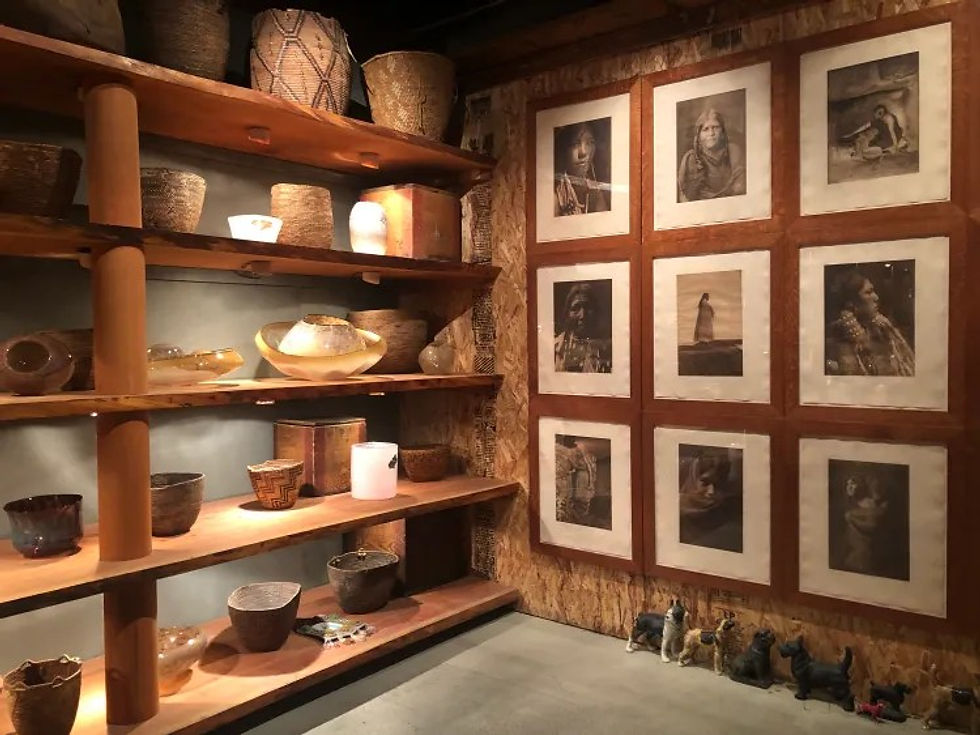
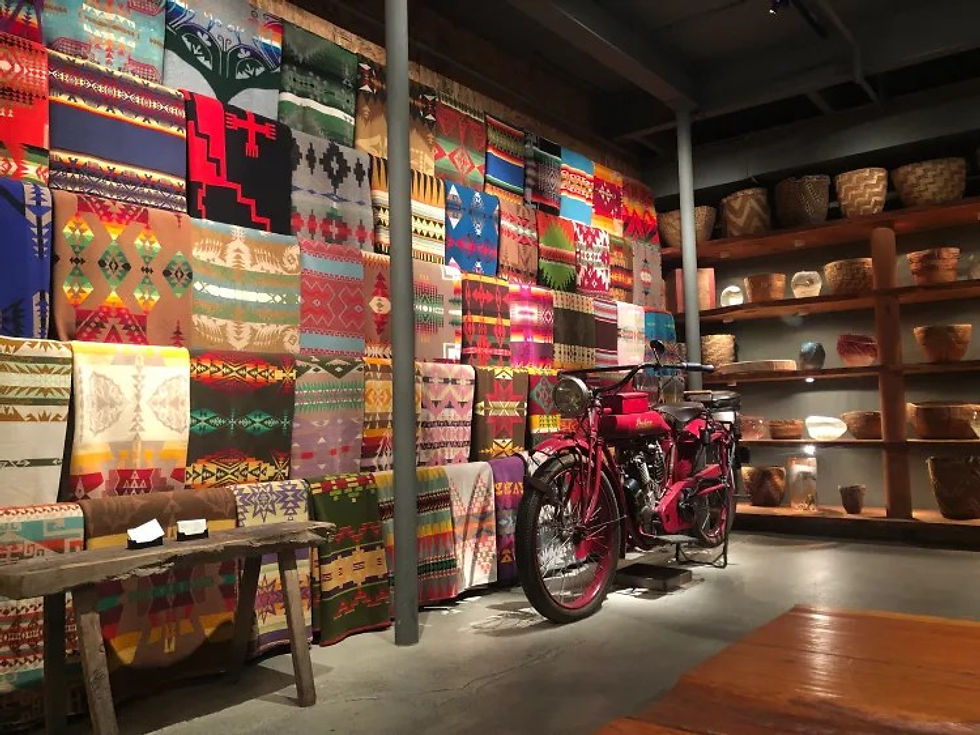

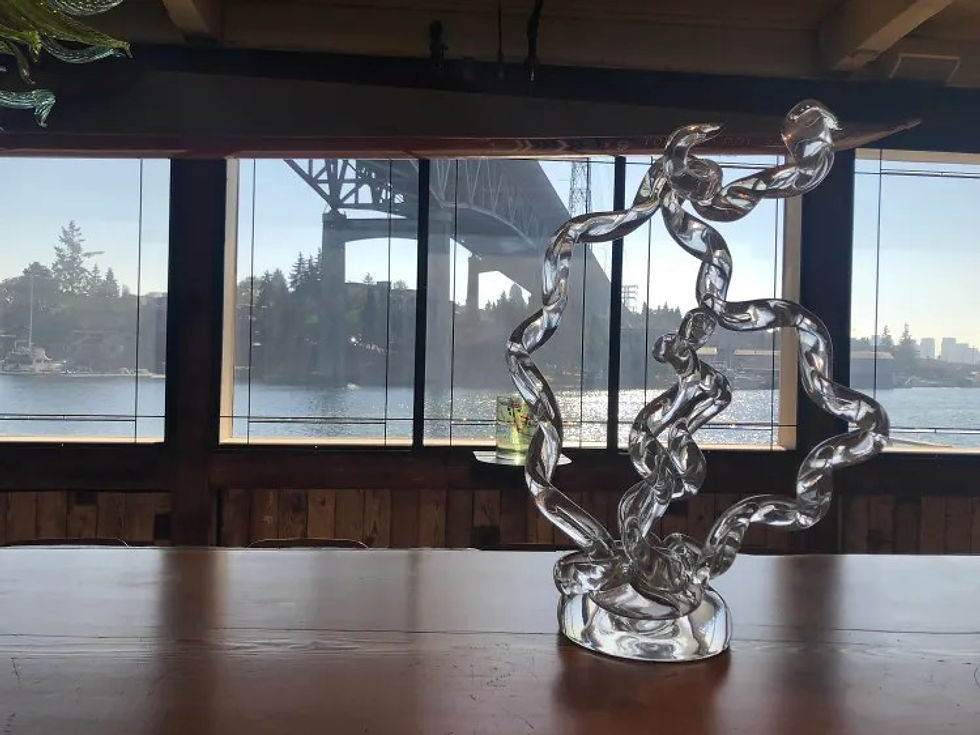

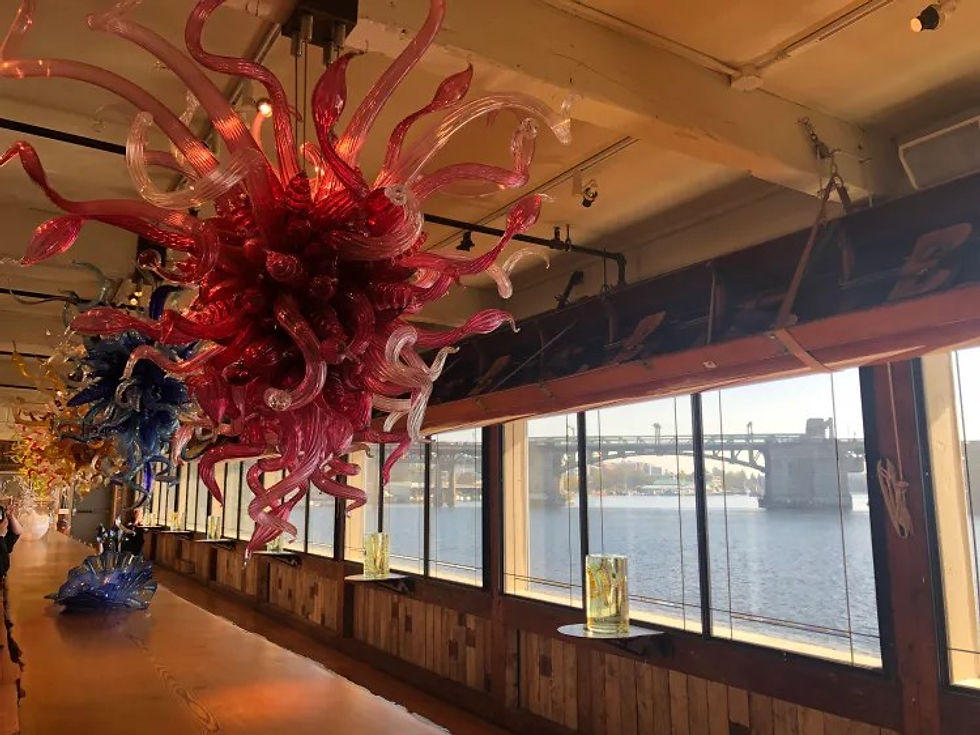
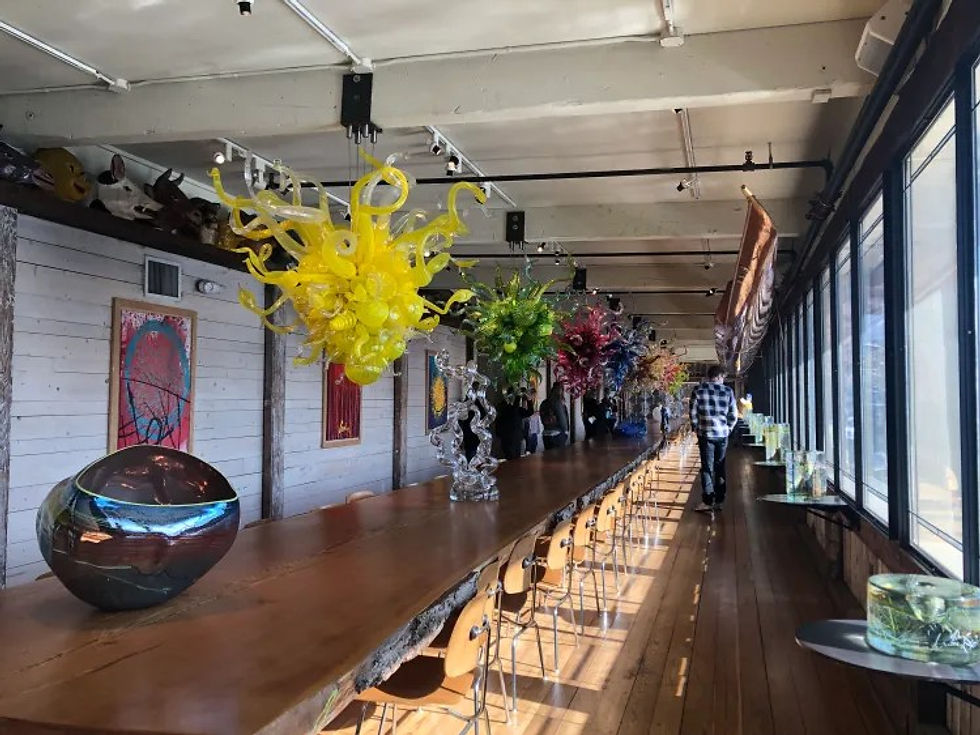

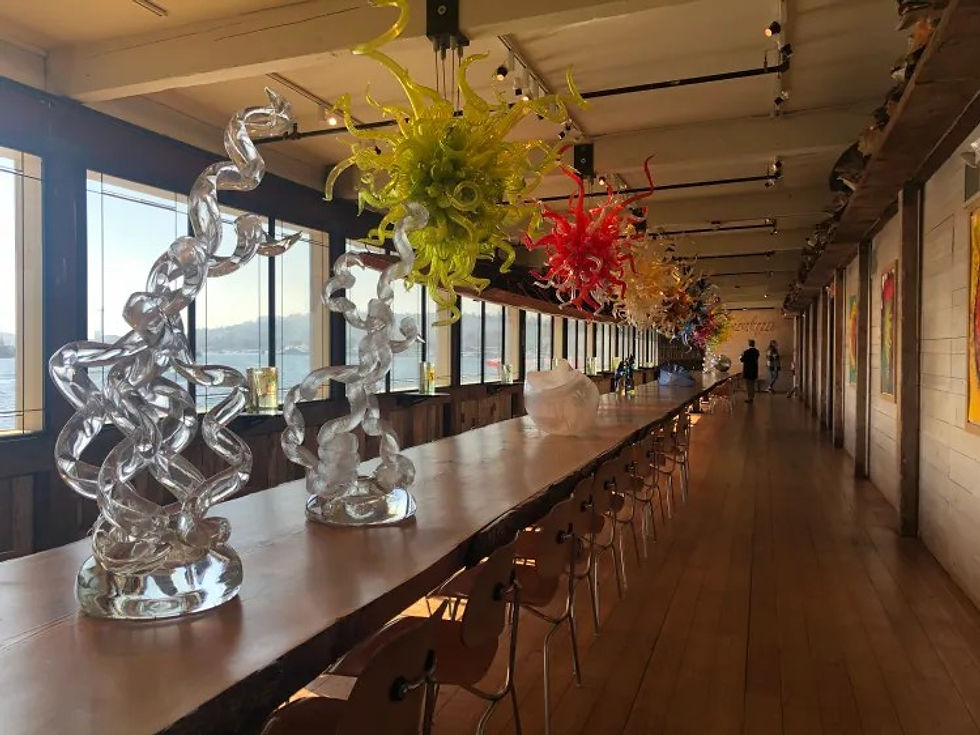


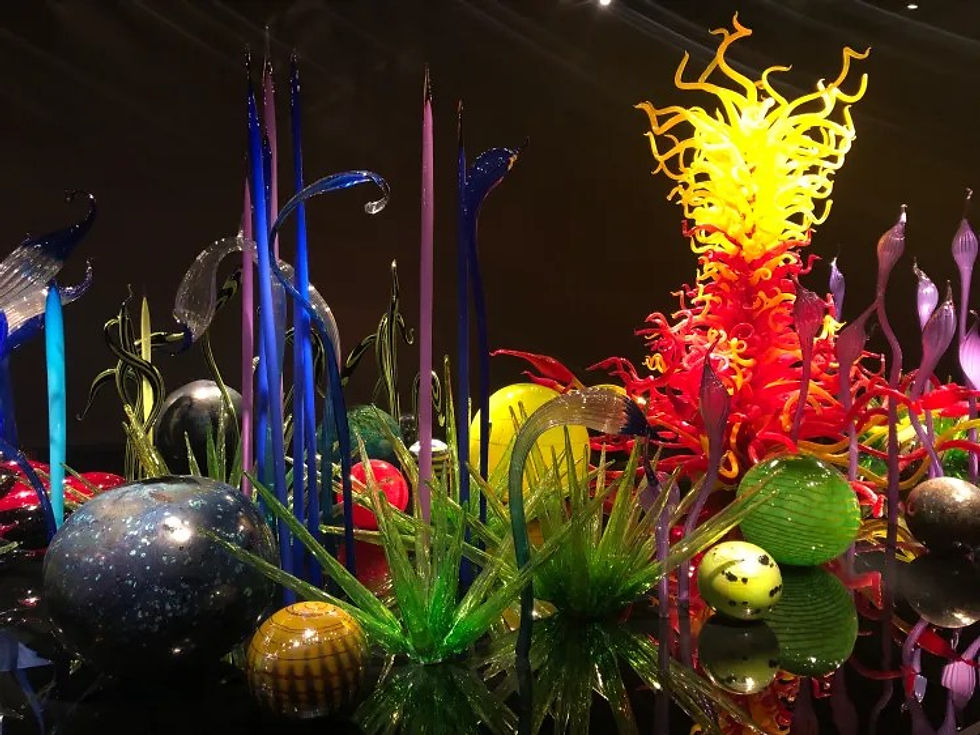

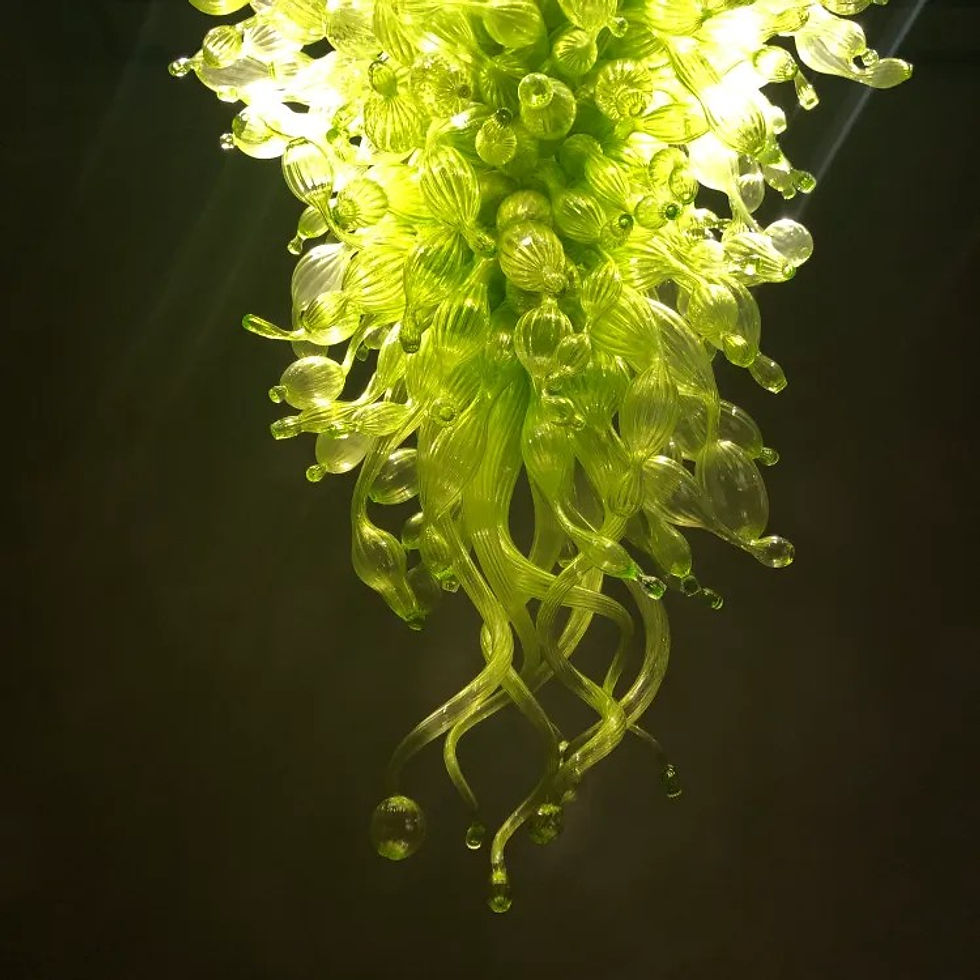
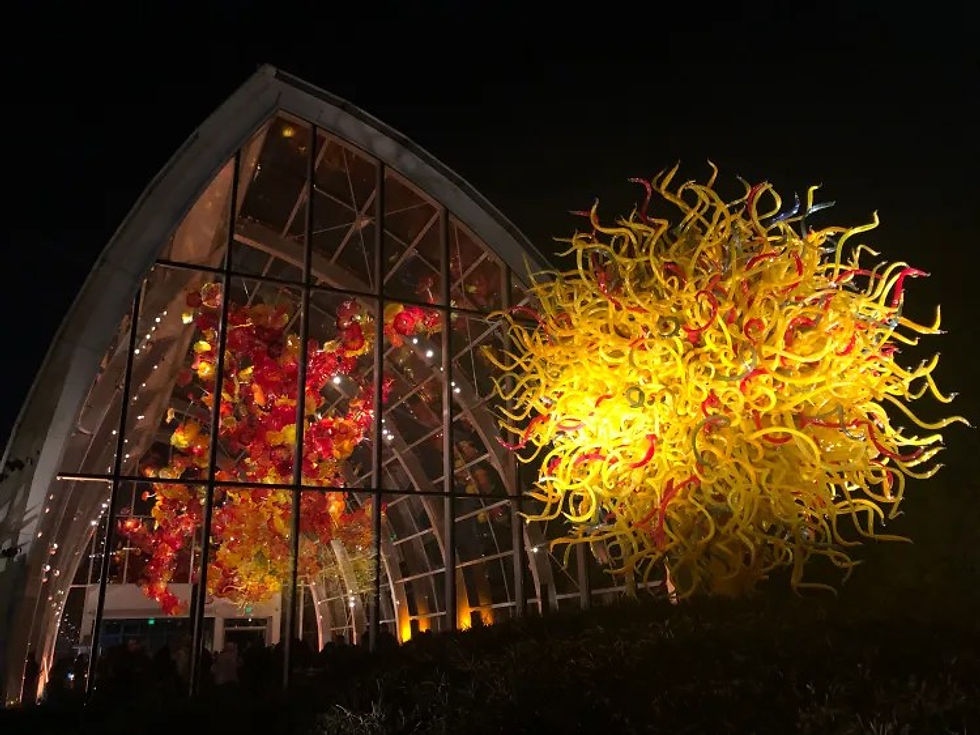



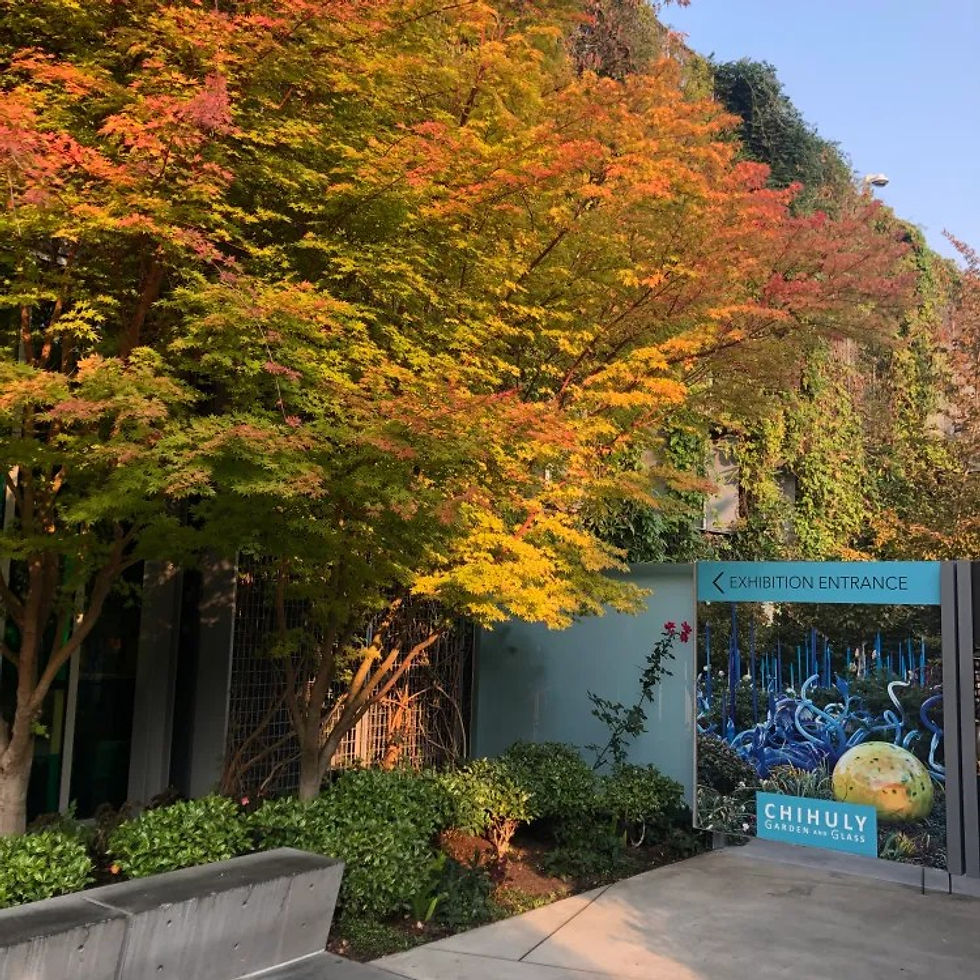

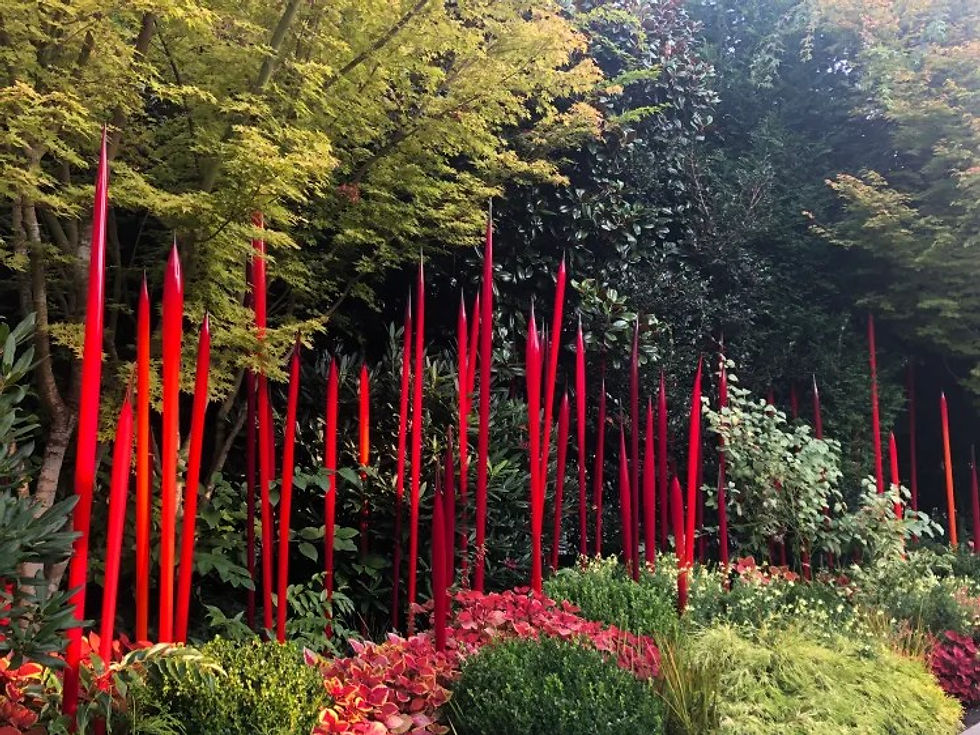








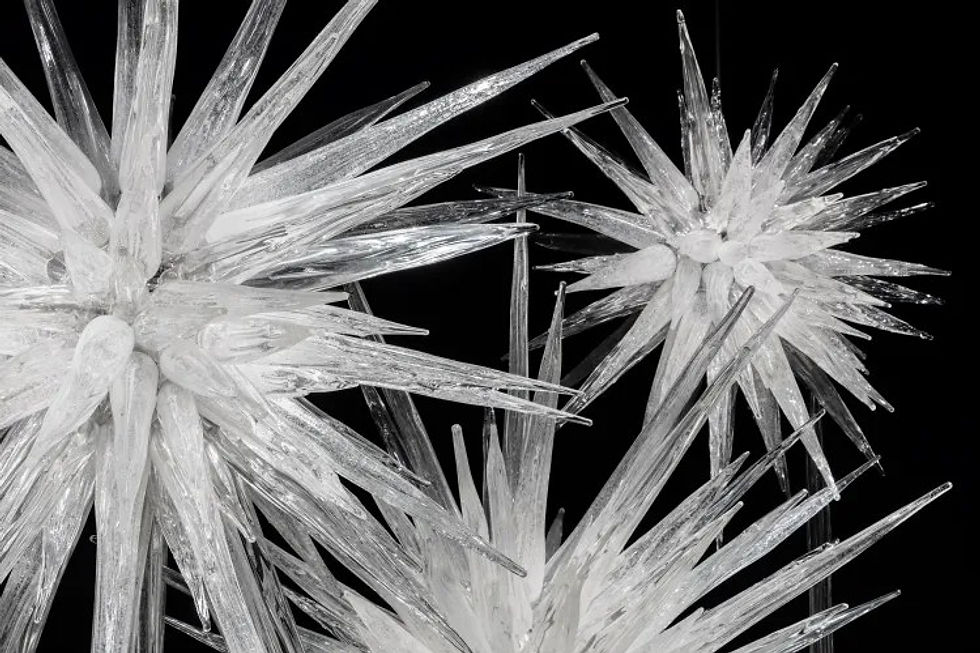
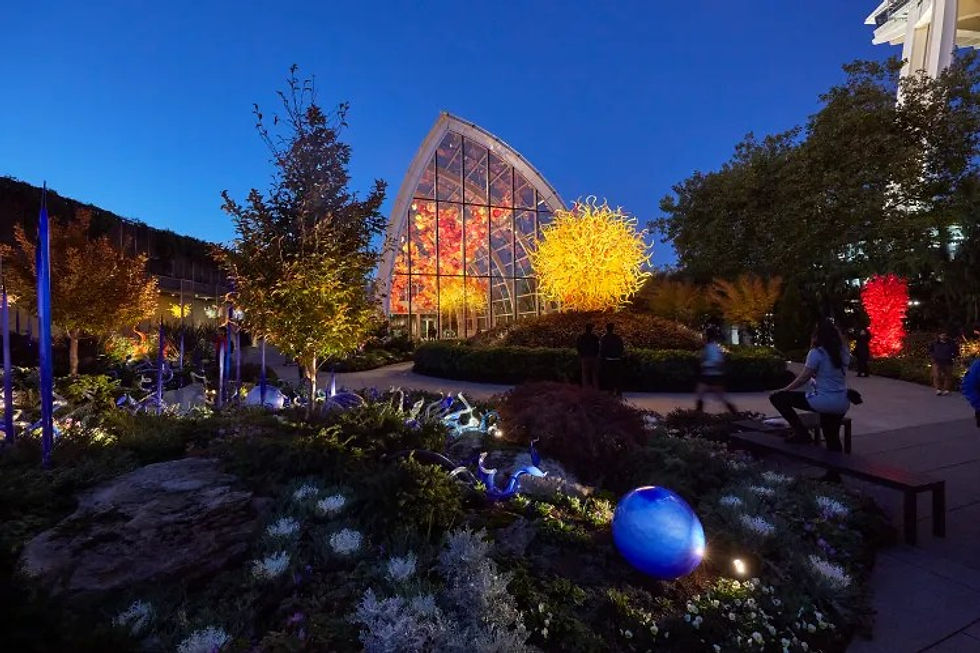
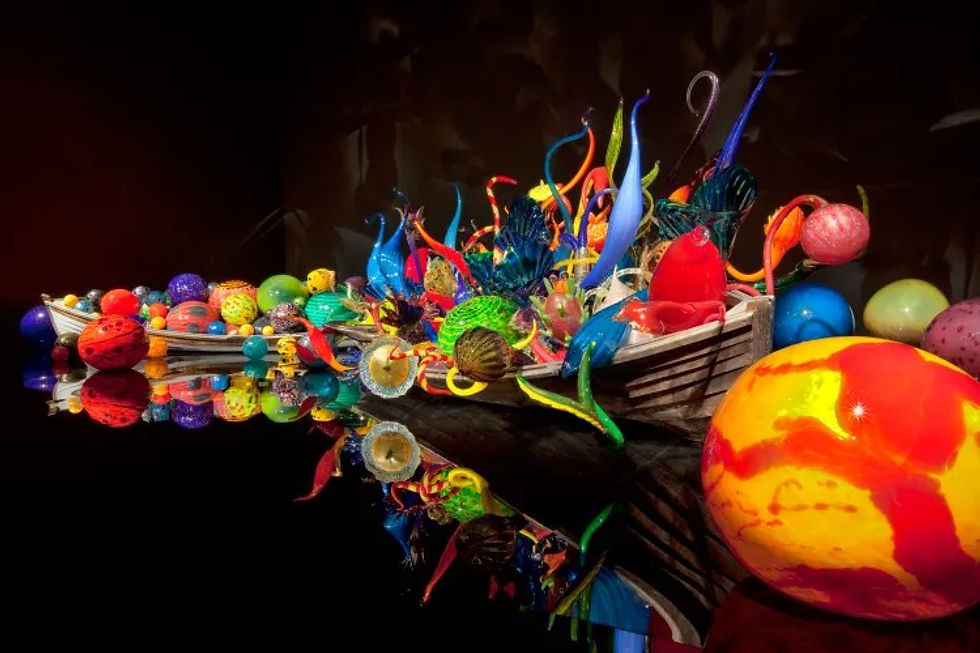

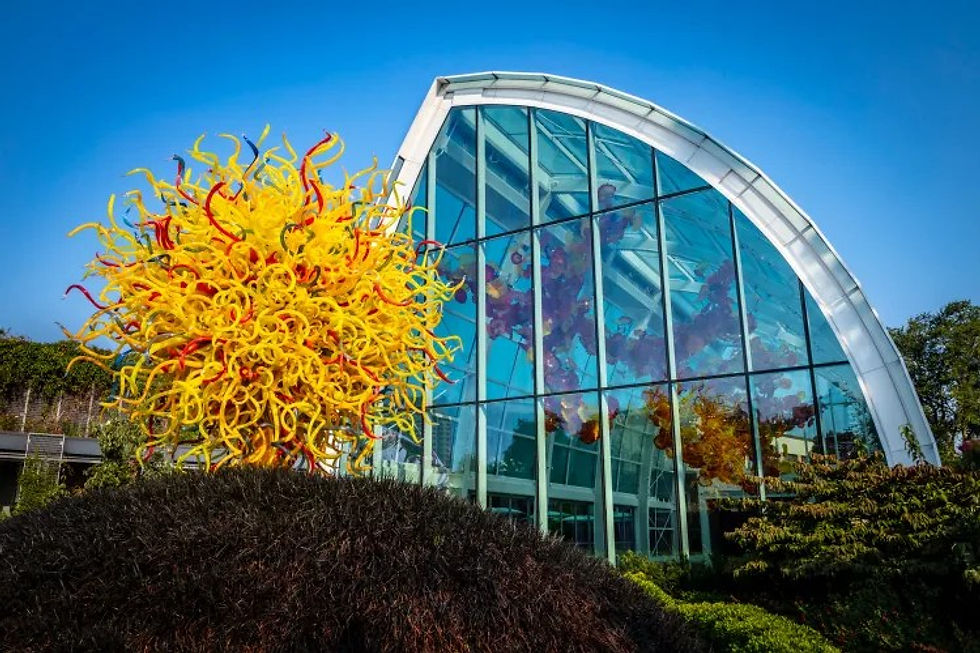






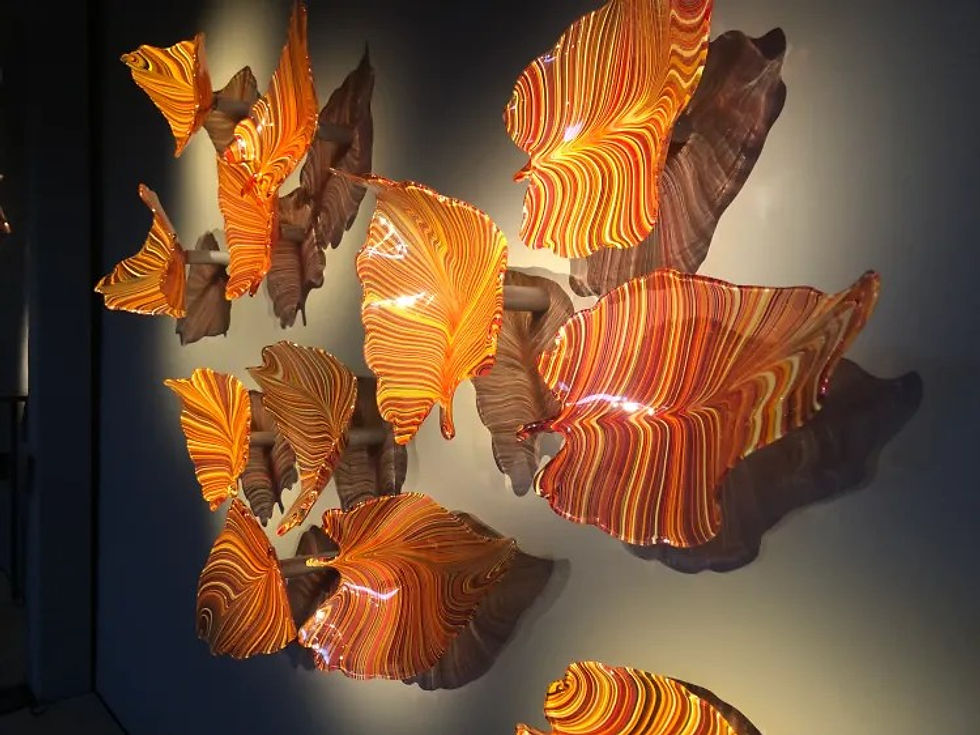



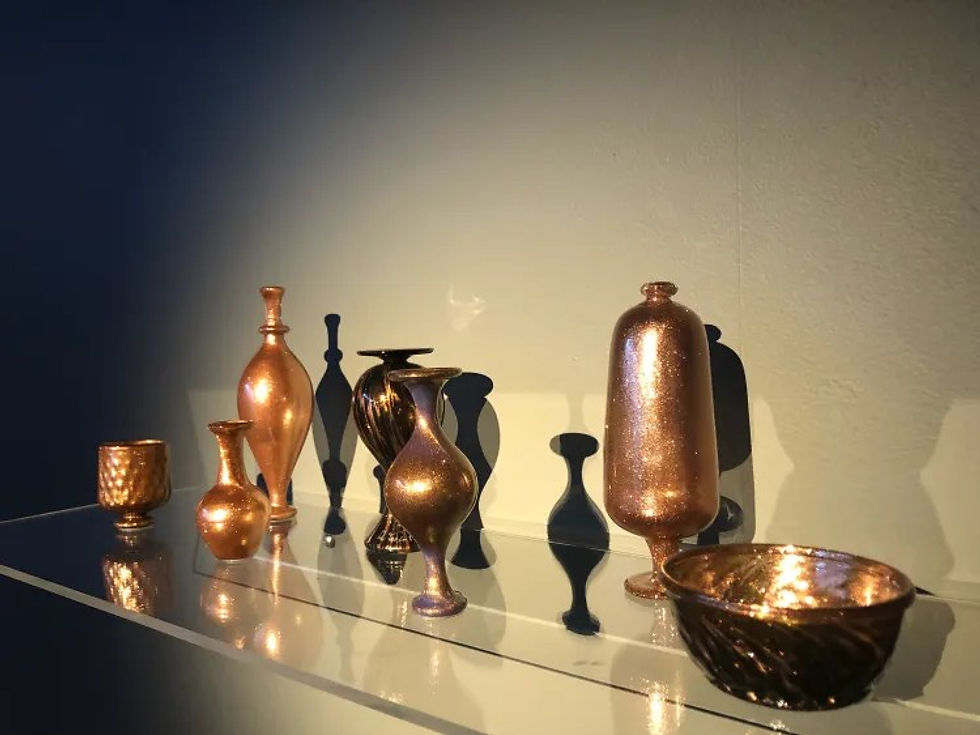


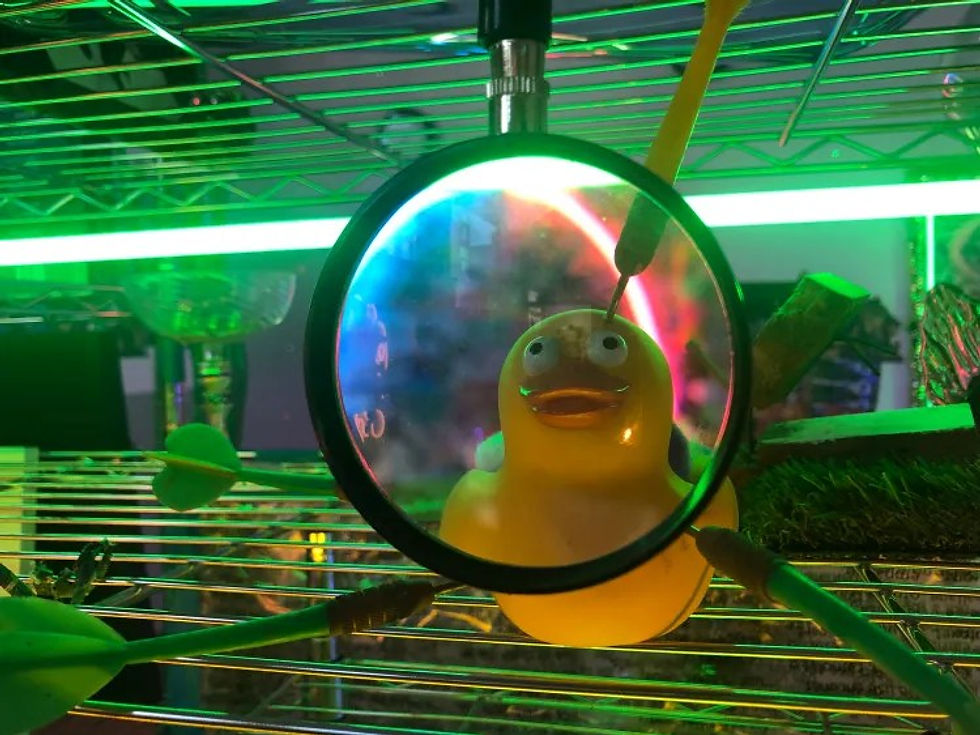

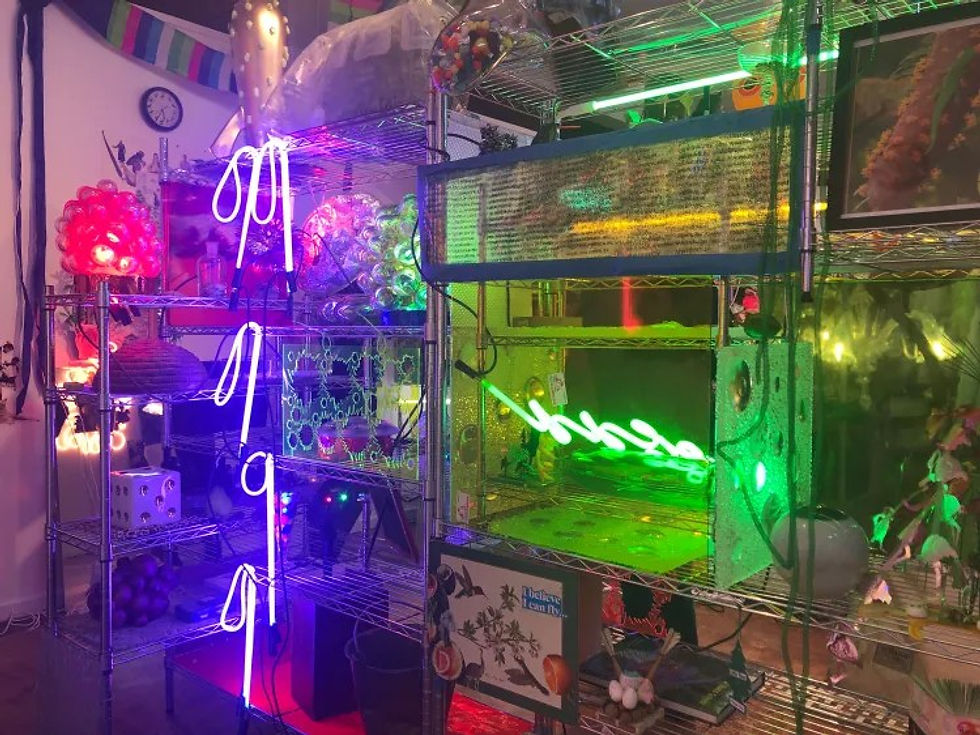




































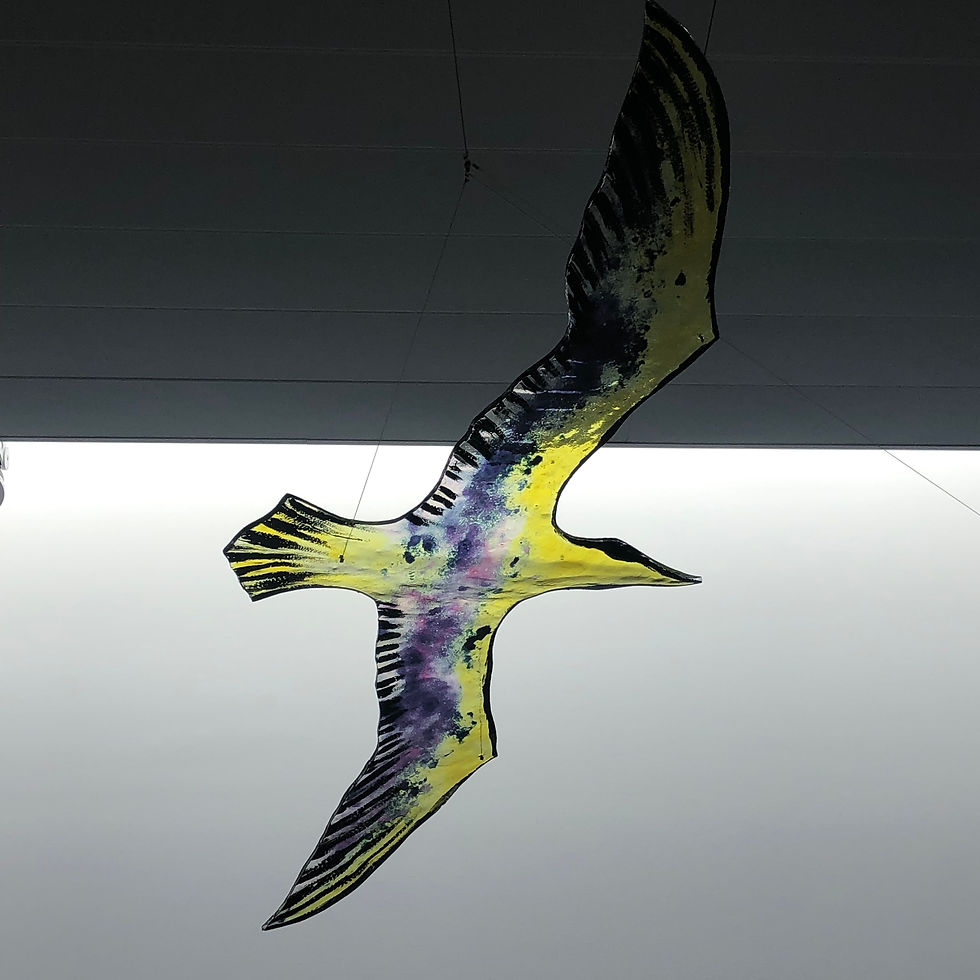
#art #SeattleWashington #TheBoathouse #theGeorgiaOKeeffeMuseum #contemporaryart #ChauChakWingMuseum #BenjaminWright #ChihulyGardenampGlass #artgallery #PilchuckGlassSchool #NaughtybyNature #shananysdambrot #RefractSeattle #artexhibition #BlownAway #fineart #TheNelsonAtkinsMuseum #GlassEyeStudio #artist #CentraalMuseumUtrecht #arts #EnChroma #theDallasMuseumofArt #Seattle #Smithsonianmuseums #NationalNordicMuseum #DanFriday #LinoTagliapietra #DaleChihuly #Chihuly #TrondurPatursson #MuseumsofContemporaryArtChicagoandDenver #CrystalBridgesMuseumofAmericanArt



